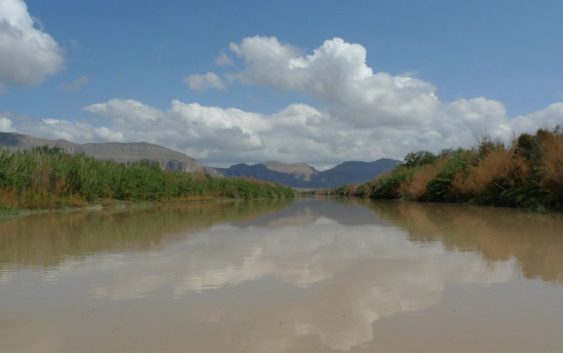- Seven months after Hurricane Helene, Chimney Rock rebuilds with resilience
- Wildfire in New Jersey Pine Barrens expected to grow before it’s contained, officials say
- Storm damage forces recovery efforts in Lancaster, Chester counties
- Evacuation orders lifted as fast-moving New Jersey wildfire burns
- Heartbreak for NC resident as wildfire reduces lifetime home to ashes
Whiplash Weather in the Valley Brings Fears of Flood, Drought, and Wildfires

Parts of the Rio Grande saw major flooding early this summer. But it’s not enough to stave off talk of drought.
It’s a tired Texas truism: If you don’t like the weather, wait a minute. In mid-July, morning temperatures in the Dallas-Fort Worth area fell to 67 degrees, almost breaking a record low set more than 100 years ago. Earlier this year, record-breaking spring rains came on the heels of a record-setting heat wave in much of the state.
But the Rio Grande Valley seems to be getting a major case of atmospheric whiplash. In June, parts of the area saw massive flooding after more than a foot of rain fell in about six hours. More than a thousand homes were destroyed or damaged after the storm, which broke daily rainfall records in McAllen, Brownsville, and other cities. And now, in the lower valley, drought has started to creep in, and a handful of counties are experiencing severe to moderate drought conditions. An August report from the U.S. Drought monitor found that droughts in the lower Rio Grande are predicted to get worse over the summer.
“Part of what we’re seeing here is the legendary variability of weather in Texas,” says Robert Mace, the chief water policy officer at Texas State University’s Meadows Center. “Parts of the Valley received more than 10 inches of rain over the past 30 days—more than three times normal—while nearby parts of the valley received less than an inch—less than a quarter of normal.” It’s difficult to trace singular weather events to climate change, Mace cautions, though each scenario could have been influenced by the global phenomenon.
The Drought Monitor says that the drought could last less than six months, and September and October typically bring rainfalls to the region that might break the dry conditions. But estimating how long a drought will last isn’t as easy as predicting when rain will fall. Dry surface winds from Mexico, where the drought is already more widespread, can dry out soils as the summer progresses, and rainstorms are less likely to develop with the lower humidity, explains Texas state climatologist John Nielsen-Gammon.
While the Lower Rio Grande’s two main reservoirs are at near-normal levels, says Mace, water usage for agriculture and urban landscapes tends to increase during periods of drought—particularly for irrigation. “You never know how long a drought is going to last, so it’s better to save water today for tomorrow than to not have water tomorrow,” he says.
The most immediate concern is an increased risk of wildfires. “We’ve got a lot of dried fuel out there,” Nielsen-Gammon says, referring to the dried grasses and vegetation that cover the landscape. The region outside of Laredo, for example, is currently facing a high risk of wildfires, according to Texas A&M’s Forest Service. “Every successive week of dry weather causes a worsening of condition,” he says.
More than 400,000 residents of the state are currently being impacted by drought conditions, and an additional 1.3 million residents are living in “abnormally dry” conditions, according to the U.S. Drought Portal. While those numbers are sizeable—almost the same population as the city of Dallas—most of the state is faring much better than it was this time last year. In August 2018, nearly three-quarters of the state was experiencing drought, affecting 14.3 million people. It was the worst wildfire year the state had seen since 2013. Luckily, this year’s surplus of rains may act as a buffer for the rest of the state, impeding the drought’s northward expansion since soils are already unusually moist.
“There’s nothing particularly concerning in the long range forecast that should be a cause for pessimism,” Nielsen-Gammon says. “But you can’t have a year long drought without that first three months of drought, so it’s always a possibility. The weather will do what it wants to do.”
READ MORE: